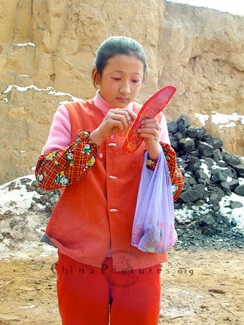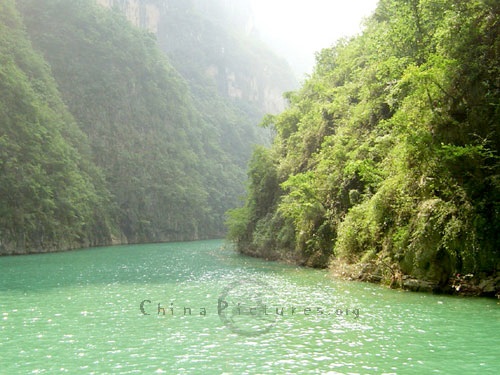
FIN
Christephanie Marie
Singer
Extraordinarily gifted singer living in Mauritius.
I met her in 1998 when I heard her sister Crystal
(then 15) sing while she was working on a yacht I had hired for a sunset dinner fund-raising event for a botanical park I was building in Mauritius with help from the government. Crystal was very modest when I said how nicely she sang and replied: “My little sister has a much better voice than me.”
So I tracked down Christephanie and arranged for her to be recorded at the Mauritius College of the Air
recording studio, her first experience in a sophisticated high-tech, sound-proof recording studio and booth, viewed through glass window by engineers at their huge panel/keyboard of tone modulaters, etc.
She did fantastically and pressed them repeatedly
to do “retakes” until she mastered the songs I had selected with her. She was supported instrumentally by Island-renowned and loved guitarist, “Danny.”
MCA, its staff and Danny all volunteered their
time and facilities for this young artist.
The recording staff told me, “She has the best voice
in this whole country!”
I sponsored Christephanie to come to Hawaii in 2002
for two weeks to record a DEMO CD. The sound engineer Seti Orion (owner of Vortex Studios) said of her after a week working on only a few songs, “I was in NYC recently and heard 100 girls sing that Alicia Keyes song. Christephanie is better than them all!.” Christephanie now studies at University of Mauritius for her degree in Design and Clothing Design. All inquiries for her DEMO CD welcome. Contact me, Thomas McCain nipponforest@aol,com.
I asked Christephanie how she learned to sing. She said, “My sister and I sang every day for years walking to school and we parroted all the songs blasting out of the little shops on the road playing international songs. On the way to school and back!”
Chelsea Wind Harp,
The wind “plays” the 86 strings of the Chelsea
Wind Harp, on a hilltop above the town of Chelsea,
Vermont. From 1969-1971, Ward McCain crafted this 30’ high Aeolian wind harp. The main beam is
actually 2 12”X12” beams I had cut and squared to size and then spliced them together in Japanese beam design, pinioned with 8 soiid bronze bolts. The giant “sounding box” is framed with straight grained maple to preserve sound conduit motion, and covered with hand picked straight grained redwood ship-lapped and screwed with brass screws and the most industrial binding marine glue to make the sounding box “one unit.” Other structural wood framing is mostly hard maple and some other exotic woods like lignum vitai. Stainless steel aircraft/alloy strings were a gift from Boeing aircraft. The top 900 lb. horizontal member is cut from 1/2” steel shaped to resemble a Kingfisher crane. A herringbone design of steel petals was welded onto this steel plate. The “string holders” were individually hand-forged by Ward on a small local forge into the shapes of “Fiddleneck ferns.” It was finished, tuned and played by the wind. in June, 1971. Depending on the velocity of the wind, lower or higher strings vibrate and create the humming sounds, audible at times miles away. It attracted thousands of visitors and was eventually dismantled and rebuilt in Maine. No nails or electricity were used. Simple tools, handmade. The owner of the harp’s hilltop site was a very kindly dairy farmer Warren Mattoon.
“Songs From the HIll” Originally released as a double-album in 1972 by United Artists. Remastered as a CD by Roark Barron,2008.roarkbarron@gmail.com for a copy. This is Track Three.
Note the massive steel brace around the vertical oak beam which cracked in 1972 it seems stressed by the weight of youthful visitors who climbed up the sounding box gripping the strings. In truth, I did not design the vertical axis strong enough nor anticipate anyone would climb on the harp. Photo by Louise Sjobeck, Vermont.
Closer view of “Fiddleneck fern-shaped
“string holders” each hand-forged.
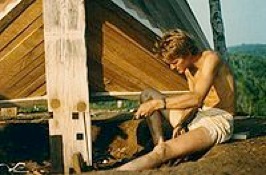
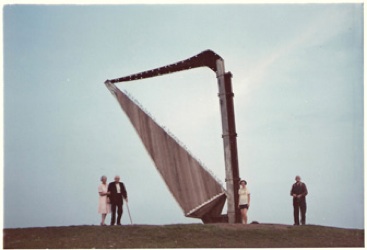

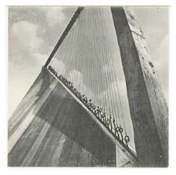
Roark Barron
Harpist/Composer
Roark began playing the harp nearly 30 years ago. Led into his love of music and strings through the guitar 12 years earlier, he played in surf bands, studied classical guitar, and developed his own free form open tuning playing style. Upon discovering the Pedal Harp, which has the potential to change tunings as you play, Roark felt he had discovered his perfect musical instrument match.
Read more about him and to purchase his CD’s go to his website
Tegami" written and performed by Angela Aki, Answers album.
Christephanie Marie at age 14 recording in the Mauritius College of the AIR (MCA) studios in Mauritius, 1999.
ROARK BARRON, Harpist, Santa Fe, New
Mexico. USA. Plays “China”.
3 La Post Way, Santa Fe, New Mexico, USA 87505
1-800-283-HARP(4277) roarkbarron@gmail.com
ROARK BARRON,built this giant
sonic wind harp himself.
Angela Aki
Singer solist and pianist/lyricist
Angela Aki, half-Japanese and half-Italian was born
in Japan, son of the founder/owner of Aeon, one of the biggest English language school chains in Japan. She began piano lessons at age 3 and moved to Hawaii at age 15 and went to high school on Oahu/Hawaii. She moved back to Japan and sang at nightclubs and pubs for years. She wrote her own music and lyrics. She stands alone from the notorious Japanese entertainment industry who greedily promote a handful of cute superstars. Aki stands alone and has made her voice and compositions popular by being herself, ignoring the Japanese music greedologists.
After a short marriage in 2002, she married again in 2006 (MORE BIOGRAPHY)
Ward at work on harp, 1971.
MUSIC PAGE
Audio Track
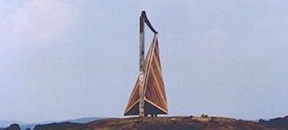
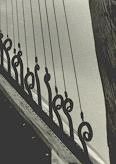
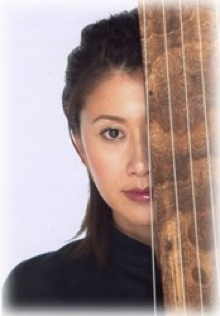
Mieko Miyazaki
Koto & Jushichigen
Phenomenal Kotoist, highly schooled, with respect for the koto, its origin, classicism, but boldly refuses to be imprisoned by ironclad “koto rulebook” and thus has been refreshing, iconoclastic joyous koto expressionist of her own musical vision for many years and toured internationally.
I heard her and Fujiwara Dozan shakuhachi player in concert, May 2004 in Central Tokyo, at an elegant regal theatre with about 400 seating. Men wore tuxedos and fine suits and women wore their finest glittering jewels and the performance was dazzling. Mieko is a master yet child-like in her daring spirit to show she is limitless in her love and employment of her koto to express as she will, Her musician compatriat duesist , Fujiwara Dozan, now considered by many as Japan’s premiere shakuhachi player, is a wizard and whirlwind of shakuhachi tone, nuance, and mood. Incredibly dextrous and youthful, full of non-melancholic repertoire. He had nearly a dozen different-sized shakuhachis beautifully laid before him on a white draped table and one by one performed on each usually with Mieko, but sometimes drifting into solo journeys. Some where short, some extremely long and bellowing in their howling sonorous tones. The shorter ones were brilliantly light in mood, speed and modalities. Mieko began the concert with the oldest, conservative melodies and anchored and won her audience from the start. But gradually she steered into her own original compository and danced improvisationally with Fujiwara-san at times, like students at music college, playing and having fun, teasing and taunting one another in improvisational frolic, or so it appeared to us, in a recognizable tradition of master Indian muisicians who are so versed in their traditional established ragas and talams that players of expert training can with no rehearsal, jam/medley instantaneously with precision and joy.
One highlight near the end was when Mieko stepped up to her apparently “home-crafted” gigantic koto (12-feet!?) and performed “East West Super Expess!” leaving no doubt that she was a cosmopolitan kotoist, not the exclusive property/asset of Nippon.
The audience laughed at times when they quipped and sparred jokes with each other in typical audience-titillating romantic/flirtingish cum professional rivalry innuendos to amuse/uplift the audience. In the end, they were given a standing ovation by the audience, every one,overwelmed with both Mieko-san and Fujiwara-san.
I highly recommend the recording of this concert called “East Current” (See CD information at left.)
Biography
Mieko Miyazaki began playing the koto at the age of 9. She studied traditional Japanese koto and shamisen music at the prestigious Tokyo National University of fine Arts and Music. While still a student, she performed at the Imperial Palace for the Japanese Emperor and Empress. Mieko passed the NHK-FM Japanese music audition for the shamisen, receiving top marks from the judges. Following her graduation in 1992, she launched her unique career as a lyricist and songwriter for TV programs. Mieko established herself as a premiere koto performer, playing a variety of styles for TV and radio appearances, performances held for official state visits, concerts and music festivals held by the Japanese embassies of a number of countries (including Iceland, Norway, and Belgium), performances at events in Italy, France, Belgium, Singapore, China, and Taiwan, and joint performances with many artists. As a songwriter, she wrote music for television, including the character songs for Fuji Television animation broadcast of Beatrix Potter's Peter Rabbit and Friends, NHK TV childrenユs shows, and TV commercials, among which some of the music written for childrenユs programs became pop hits.
In 1999, at a concert commemorating victims of the Great Hanshin Earthquake, she gave a riveting solo performance of original koto music that was met with enthusiastic response, and marked a merging of her talents as a songwriter and performer.
Since then, she has formed her own groups and devoted herself to performing original concerts. In 2004, one of her groups, East Current (a duo comprised of the koto and the shakuhachi, a bamboo flute), embarked on a five-city U.S. tour, where her performances drew exuberant reaction from the American audiences. She has released nine albums since 1995. Her three classical music CDs released since 2000, Koto Sebastian Bach, Koto Ambient Chopin, and Koto Ambient Gymnopedie, continue to sell well at Japanese CD shops, and some of her works have also been released in the U.S.
Her album contains the hit single "The Current" which is listed in the Top 30 for koto music in 2005
URL:http://www.geocities.jp/miyazaki_mieko/
mailto:mieko_miyazaki@hotmail.com
Mieko MIYAZAKI all rights reserved
JUNE. 30. 2008
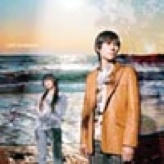
“East Current” Released in 2005,
Mieko performs live a duo with Dozan Fujiwara, the world’s leading young shakuhachi player. The CD contains a rich selection of Mieko Miyazaki originals, Japanese oldies, and even an Astor Piazzolla tango.
FUJIWARA Dozan (shakuhachi)
The Current, East West Super Express etc.Columbia Music Entertainment
[MYCJ-30155]
2800yen
MONTHLY MUSIC MAGAZINE HOUGAKU JOURNAL
Mieko Miyazaki email:
mieko_miyazaki@hotmail.com



Christephanie Marieat age 18 sings Alicia Keyes recorded at Sethi Orion’s VORTEX Studios, Kona, Hawaii 2003 for a DEMO CD produced by Thomas McCain.
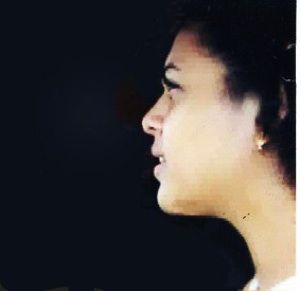
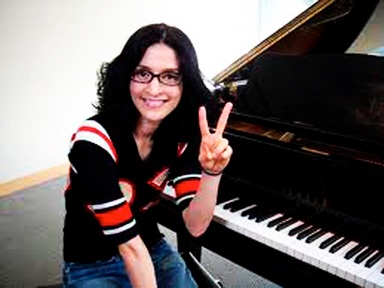
Mieko plays koto solo.
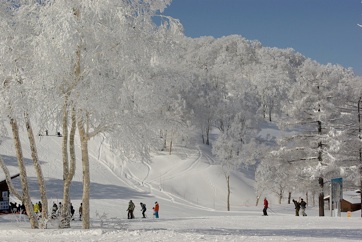
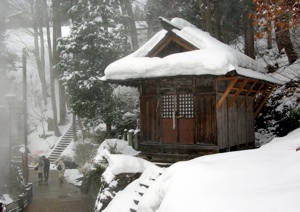
VILLA NOZAWA,, Nagano, Japan
Nozawa Village, Nagano, Japan. Bullet train from Tokyo to Nagano, then bus/train or short ride to the Villa. Ski from your room 100m to the slopes.
Bath in onsen behind the lodge. Tatami mat rooms. Gracious, extremely nice bilingual owners/hosts. Quintessential Japan. Nozawa Village population 4,000.
Email Hiroko and Mark:
The
They own/manage three other lodge/inns nearby
as well. Very reasonable rates. So friendly and helpful.

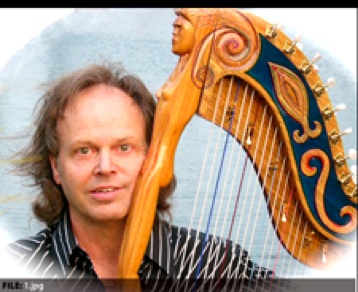

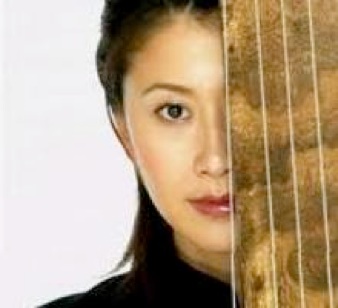
MUSIC FROM CHINA
